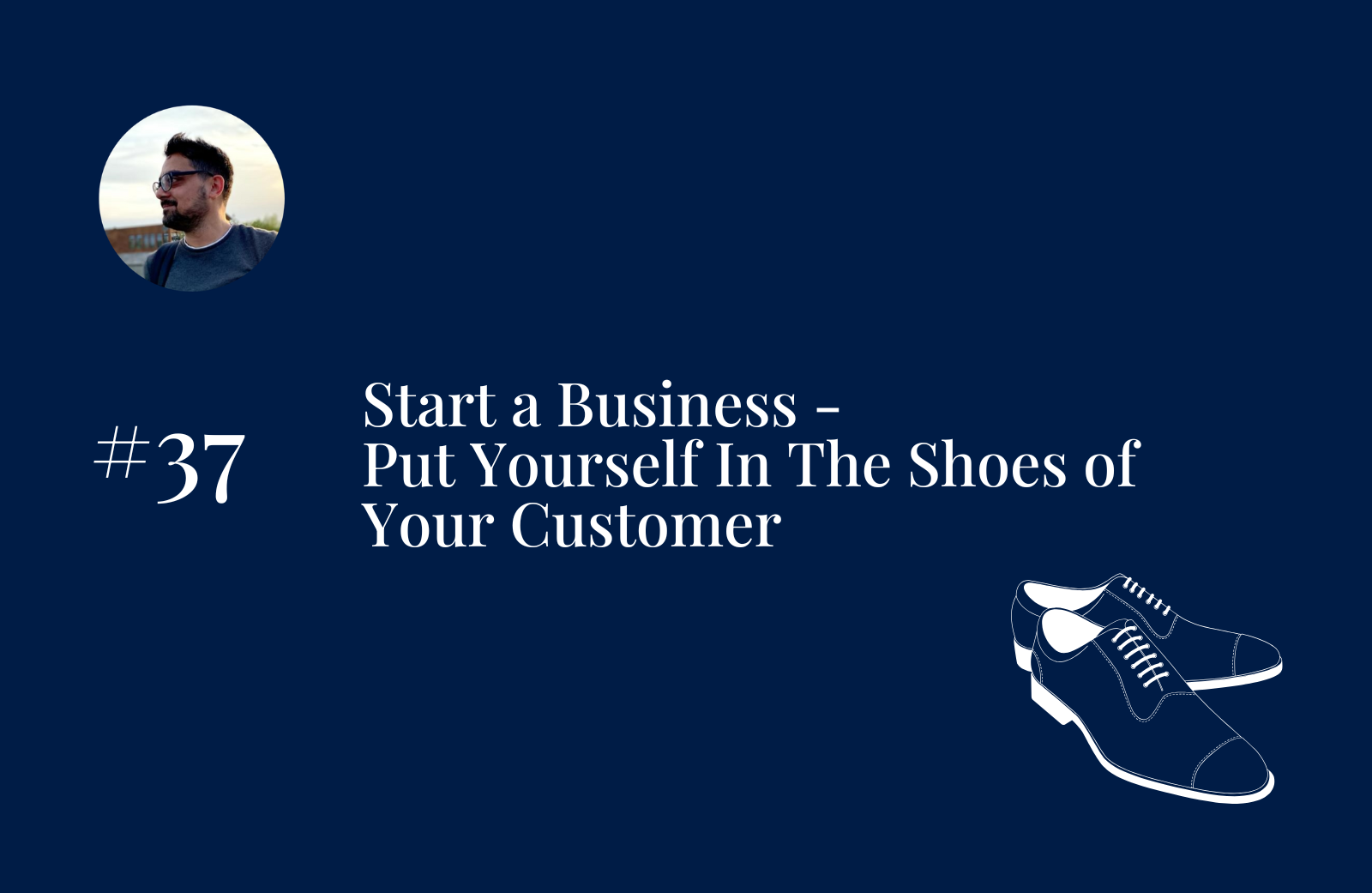
05 Feb Start a Business – In Customer’s Shoes
Feb 5, 2025
In the previous publication – “Interviews with the Customer” – I discussed the importance of interviewing your customers. Remember the words of Steve Blank? He said the following:
``There are no facts inside your building, so get outside.``
You can stay in your office or home and think as much as you want about what your customer wants, but at the end of the day, you have to make a reality check. Is what I am thinking actually what my potential customer wants?
That’s why interviews are important. In fact, I would say that they are the foundation of the whole business.
After interviewing your prospects, you’ll have very valuable information that will tell you if you should stop wasting your time investing in what you are doing, or if you should adapt and continue.
However, before continuing, you have to take another important step. You need to make a list of conclusions from the interviews because they will guide you on how to move forward.
Empathy
When you talk to a person, the best way to understand them is to put yourself in their shoes. Show empathy. Look through their eyes and understand how they see the world and how they feel.
We’ll do the same today.
After the interviews, you already know how your customer thinks, sees the world, and what they feel. Put yourself now in the shoes of the customer and pretend you are them.
In The Shoes of The Customer
Now, when you are in the shoes of your customer, we will try to answer a few questions as if they are answered by the customer.
To make this exercise more practical, let’s imagine that your business is about manufacturing lawnmowers.
Here are the questions you have to answer:
- Who is your customer? What does he do for living? What is his life style?
- What is the customer’s problem that must be solved?
- What improvements the customer would like to have?
- What does he value in the product?
It is not necessary to write long answers. What we need is a paragraph answering the questions above. Here is an example:
Your client is a businessman with a large house who enjoys the calming effect of mowing the lawn. However, he gets bored when the task takes too long. He needs a quality lawn trim that doesn't take too much time and is enjoyable. He would appreciate it if the machine he uses is not too noisy.
It’s your turn now. Write one or two paragraphs that try to explain who your customer is, what their lifestyle is, what their needs are, and what they’d value in your product.
Do You Know Your Product Well?
Take off the customer’s shoes now and answer the questions below. They must be from your perspective and aim to show you if you understand your product.
- How does my product or service solve a specific problem?
- What value and guaranteed results does it offer to the customer?
- How much will it save, how much faster will it be, or what better safety does it provide?
Again, as in the previous chapter, we need one or two paragraphs gravitating around these questions. The ultimate goal is for you to have a summary of what you sell.
Here is an example:
My lawnmower has a 10-horsepower engine (powerful), a cutting width of 70 cm (wide cut), and is powered by electricity, with a high-quality electric motor that produces low decibels.
It’s your turn now.
Do You Know Your Customer?
Put yourself again in the shoes of your customers. Based on what you know about them and what you are selling, answer the question below.
- How does your product or service create more value than its competing counterparts on the market?
The goal here is to find out what value the customer finds in your product.
Here is an example:
The lawnmower moves faster and cuts wider than its counterparts on the market. It is also not very noisy and won't annoy me.
It’s your turn now.
Why Would I Buy This Product?
Do not leave the shoes of the customer. Stay there because we’re not finished yet! Try to complete the following sentences from a customer’s perspective:
- “I want to buy this product because it will…”
- “The things I value in this offer are…”
- “The product is better than its counterparts because…”
The goal here is to find out if there is an intersection between what the customer needs and what you offer. If there is no intersection, your product will most likely fail. Therefore, you have to adapt or leave this business. However, if there is an intersection – that’s good news!
Keep in mind that the sentences above are given for the sake of the example. Feel free to adapt them or answer one or two of them.
Here is an example:
I want to buy this product because I can take care of the lawn. I'll do that faster, and on top of that, it won't be too loud.
It’s your turn now.
Special Offer
As you can see, what we did is to understand what the customer needs, what we actually offer, and if there is an intersection between these two.
The final result, you may have noticed, is a clear idea of what our product should offer, but not just that. We also know what our special offer must be.
Imagine an advertisement with the following words:
Experience fast, high-quality, and whisper-quiet lawn mowing!
Of course, this sentence is not perfect, but you get the point.
File all the information you have collected and the results of this exercise because we will move on.
